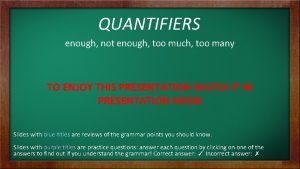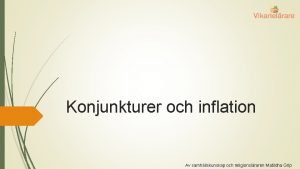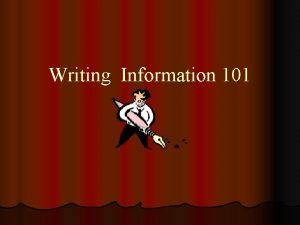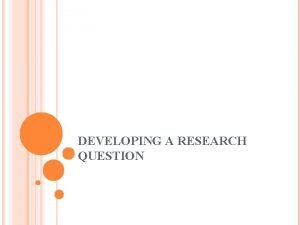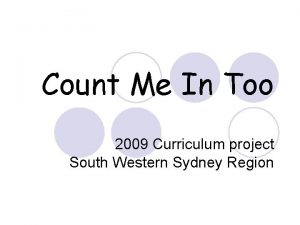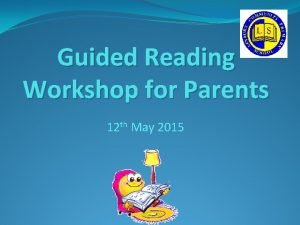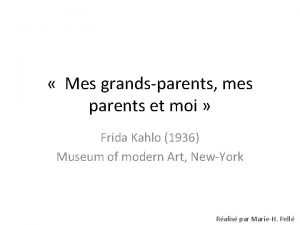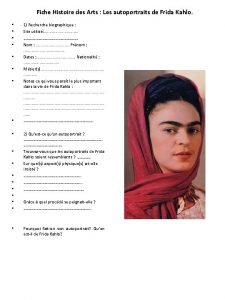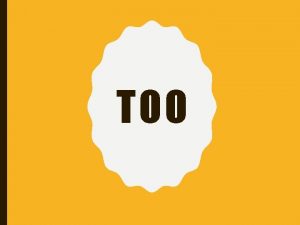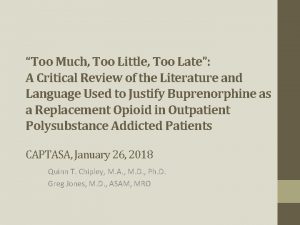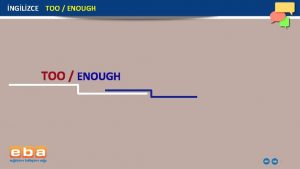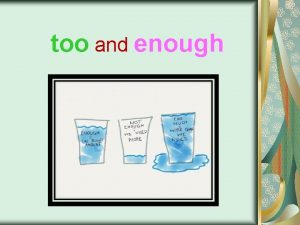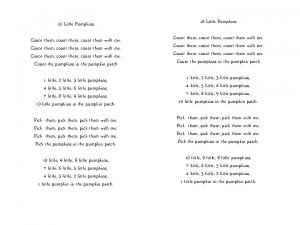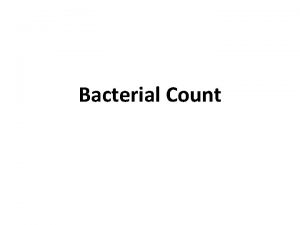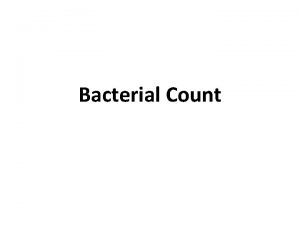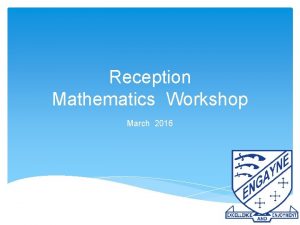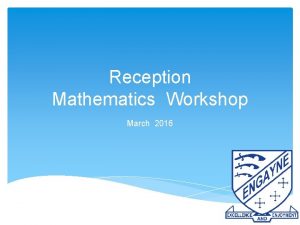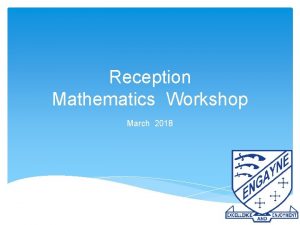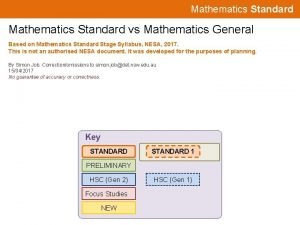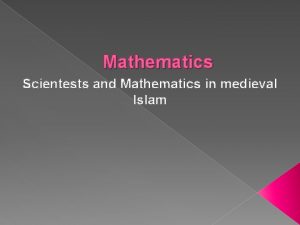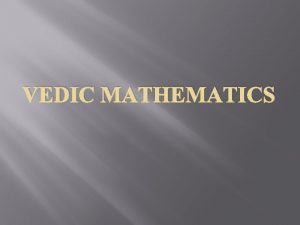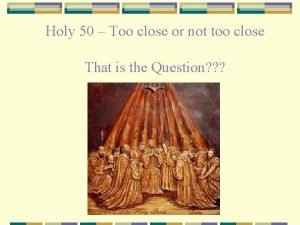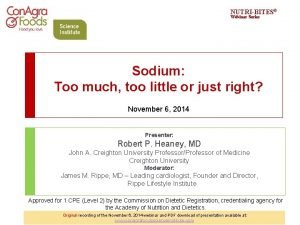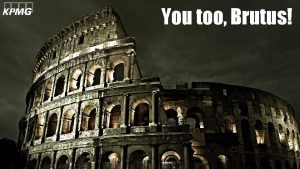Mathematics Workshop for Parents PARENTS COUNT TOO How

















- Slides: 17

Mathematics Workshop for Parents “PARENTS COUNT TOO”

How Can You Support Your Child’s. Learning of Mathematics? � Show � an interest in your child’s school work Expect your child to succeed � Share a positive attitude towards mathematics with your child � Support � Talk your child’s interest in mathematics about mathematics and solving problems

� Be prepared to discuss mathematical ideas � Point out how mathematics is used every day � Ask your child what they have learnt in mathematics � Be positive about your child’s efforts and encourage them to practise skills � Support the school’s mathematics program

� The most important thing you can do is to take the time to discuss mathematical thinking with your child and show you value your child as a learner of mathematics

How can I help my child with Maths at home? 1. Working Mathematically: Students who feel confident about Working Mathematically feel confident about themselves as learners of mathematics. � Encourage your child’s curiosity about the use of numbers and measurements in the world around them eg in the kitchen (measuring, digital timers, sharing, fractions) � Listen to their many questions and ask your own questions. � Play games together and discuss how mathematical ideas can be used to play (in a board game work out what die you may need to throw to land on / win)

2. Number: � Count with your child whenever possible. Play counting games while travelling in the car. Remember to count forward and backwards starting from different numbers. � Look for numbers in your local area (eg house numbers, prices, speed signs, Roman numerals) � Number plate game: how many different numbers can you make from the 3 digits displayed on car in front of you � Card games: addition or subtraction snap

3. Patterns and Algebra: � Use a calculator to count by 1, 2, 3 and so on. Press +2= then continue to press =, =, = � Play ‘guess the next number’ or ‘guess my rule’ games. This involves listing a set of numbers that form a pattern eg 2, 5, 8, 11, . . . � Talk about the relationship between number groups eg 2+1 = 3 and 1+2=3 � Play detective: work out the missing number in a ‘code’ eg 3 + = 8

4. Data: � Create a graph of your child’s growth over time. � Use tally marks to score in a game, or count days to a special event. � Collect data relating to the child eg count up books that have been read over a month

5. Measurement: � Collect jars and containers of different sizes and shapes. Sort them from smallest to largest capacity then check by filling (great for in the bath) � Join your child in working out measurements for cooking, building, craft or sewing � Read and interpret timetables with your child eg train, bus, TV guides. � Encourage your child to estimate how long it will take to perform a common task eg minutes or seconds

� 6. Space and Geometry: � Encourage your child to find shapes and objects used in their environment eg in buildings, parks, schools, shops. Why are some shapes and objects used more than others? � Discuss 3 dimensional objects with your child using their geometric names eg cone, cylinder, cube, sphere, rectangular prism. Have a ‘shape hunt’. � Identify symmetry in the environment. Sort leaves and flowers on the basis of symmetry. � Find examples of tessellating shapes in the community eg pavements, buildings.

USEFUL WEBSITES � � � 1. K-6 Mathematics Parent Support Document PDF (40 pages of ideas and information) http: //k 6. boardofstudies. nsw. edu. au/go/mathematics 2. Ta. Le: http: //www. tale. edu. au 3. Curriculum support http: //www. curriculumsupport. education. nsw. gov. au/primary/mathematics/index. htm (with links to others below) � 4. Parents Count Too (downloads for all strands) � 5. Count Me In Too: http: //www. curriculumsupport. education. nsw. gov. au/primary/mathematics/numeracy/parents/index. htm http: //www. curriculumsupport. education. nsw. gov. au/countmein/parents. html � 6. New Australian Curriculum http: //www. australiancurriculum. edu. au/Home � 7. National Literacy and Numeracy Week http: //www. nlnw. nsw. edu. au

The new National Curriculum: Mathematics BEFORE: � Patterns � Number and Algebra � Space and Geometry � Measurement � Data The Content Strands are now: � Number and Algebra � Measurement and Geometry � Statistics and Probability

BEFORE: Working Mathematically? Questioning � Reasoning � Applying Strategies � Communicating � Reflecting � NOW: Proficiency Strands: Fluency � Reasoning � Understanding � Problem solving �

�CONTENT taught is what is being �PROFICIENCY being taught is how it is

Curriculum is divided across 4 year groupings: BEFORE: � Early Stage 1: Kindergarten � Stage 1: Years 1 and 2 � Stage 2: Years 3 and 4 � Stage 3: Years 5 and 6 NOW: K-2: 5 to 8 years 3 -6: 8 to 12 years 7 -10: 12 to 15 years 11 -12: 15 to 18 years

Connections to other Learning Areas �English �History �Science

 Kahoot too enough
Kahoot too enough Research questions
Research questions Too foreign for home
Too foreign for home Too much money is chasing too few goods
Too much money is chasing too few goods Too blessed to be stressed too anointed to be disappointed
Too blessed to be stressed too anointed to be disappointed Too broad and too narrow examples
Too broad and too narrow examples Too broad and too narrow examples
Too broad and too narrow examples Being too broad
Being too broad Too big too small just right
Too big too small just right Count me in too
Count me in too Reading workshop for parents
Reading workshop for parents Grand parent de frida kahlo
Grand parent de frida kahlo Parents parents
Parents parents Frida kahlo autoportrait a la natte
Frida kahlo autoportrait a la natte Steg för steg rita
Steg för steg rita Cks
Cks Redogör för vad psykologi är
Redogör för vad psykologi är Jag har gått inunder stjärnor text
Jag har gått inunder stjärnor text
